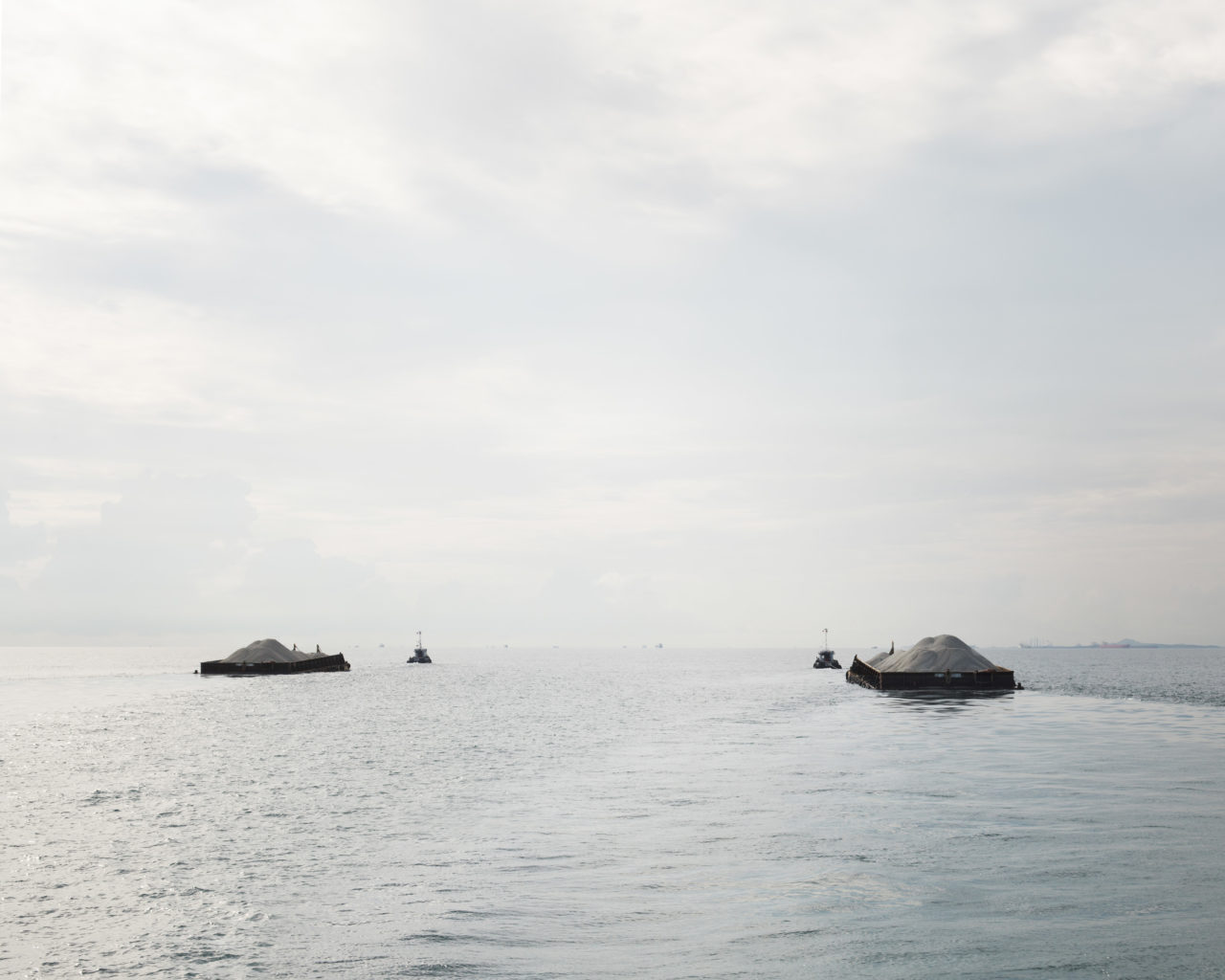
Cities never develop without a hinterland – to nourish any form of urban concentration, large volumes of material resources need to be mobilized in territories beyond the limits of the city. The territorial impact of contemporary cities extends across vast geographic scales, forming planetary hinterlands. Our research project on Singapore’s hinterlands has asked how one could analyze the «metabolic» dimensions of urbanization processes in qualitative terms: How could one describe the practices, landscapes, and agencies of resource extraction, trade, and accumulation? How could one reverse the city-centric perspective of our regular approaches? How could one explore hinterland territories as lived spaces in the vortex of urbanization also exposed to political, ecological, and class struggle?
Until recently, the study of urban resource consumption generally focused on the functions of an urban center, expressed mainly through quantities of material «stocks and flows.» Within this mainstream city-centric view and a quantitative approach to urban metabolic processes, socio-political and ecological dimensions of resource use were often missing from research agendas.
As part of the study Hinterland – Singapore Beyond the Border at the ETH Architecture of Territory since 2011, we reversed the mainstream perspective on urban metabolic research by formulating a qualitative, socio-metabolic approach. We studied the wide territories of Singapore’s contiguous and dispersed hinterlands through the lenses of five resources vital for the city: sand, food, water, human labor, and energy. We sought to describe how and where materials are extracted, how and by whom they are traded, and how they are eventually accumulated in the form of urban space, urbanity, and capital.
Singapore is the World’s Largest Importer of Sand
The study, for example, showed that Singapore has imported water since the beginning of the 20th century: around 40% of its water supply still arrives from Malaysia, while the rest comes from local, intensively engineered sources including desalination, water recycling, and rain catchment. Sand has been imported since the 1980s, when local quarries ceased to provide suitable material for large-scale land reclamation projects. Recent statistics have revealed Singapore as the world’s largest importer of sand. These and other examples have also provided insight into resource (geo)politics over time, showing that rules or regulations under which resources «flow» between countries are often nontransparent or completely missing – at grave social and ecological cost.
The hinterland investigation led us to questions of the actual and appropriate scales of urban governance. Without doubt, new forms of large-scale action and governance that apply to the transnational dimensions of urbanization processes are necessary. Thinking of the sustainability of cities only as a function of the center seems to be an almost trivial, misconstrued problem. Large-scale metabolic flows are mobilized and remote areas of the planet are industrialized and urbanized in order to support cities. They need to be brought into the discussion of governance beyond the limits of the city.
The hinterland research also resonates with important recent developments in the field of urban theory, particularly the theory of planetary urbanization. They highlight the necessity to understand resource hinterlands as so far neglected and understudied territories of urbanization. They also call for a complete change of perspective on urbanization and on cities – moving beyond the idea of cities as bounded settlements and embracing their simultaneous extension over the territory.
Milica Topalovic is Assistant Professor of Architecture and Territorial Planning at the ETH Department of Architecture. From 2011-15 she held a research professorship at the ETH Future Cities Laboratory in Singapore, studying the relationship between a city and its hinterland.